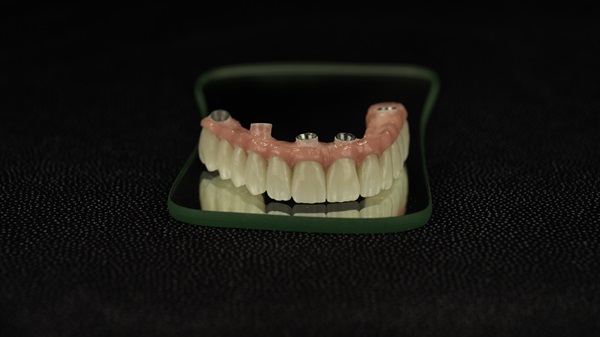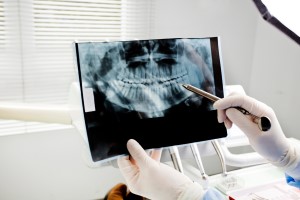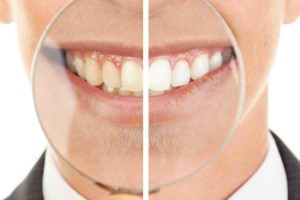What Is a Dental Bridge?

A dental bridge is a popular option for restoring a missing tooth or consecutive missing teeth. This treatment can help bring back your appearance and dental function. It can also relieve dental pain and loosening. Knowing more about this dental appliance can help you prepare for your next appointment. Here are the details that you must consider about a dental bridge before getting it from your general dentist.
What a dental bridge is
This form of restoration can fill the gap between teeth. It is ideal for at least one missing tooth. Filling the gap with a dental bridge can prevent dental issues, such as misalignment and jaw pain. The general dentist will perform a comprehensive dental exam and see if the individual can have this dental restoration. The dentist can also recommend what type of dental bridge will suit the individual the most.
Good candidates
Getting a dental bridge can bring a new smile and better oral health. The general dentist will check the patient’s natural teeth. The health of these teeth will determine what type of bridge will be most useful. A full dental exam can also see if the individual can get a dental bridge. Here are the traits that a person must have to be a good candidate for this restoration:
- Good oral health is an important factor in getting a dental bridge. Gum disease can lead to gum recession, which can affect the appearance and fit of the restoration. Tooth loss can lead to jawbone loss, dental shifting, and misalignment. Good dental health can reduce one’s risk for complications. If the individual has dental issues, treating them must come first before getting a dental bridge.
- Strong teeth are necessary for supporting the bridge. The natural teeth on the opposite sides of the dental gap are abutment teeth. A traditional dental bridge needs strong abutment teeth to achieve stability. Otherwise, the restoration could fail.
- One to four consecutive missing teeth can affect one’s smile and speech. Losing as many as up to three teeth can even affect the way one eats. A dental bridge can fill up to four consecutive teeth, allowing the individual to eat, speak, and smile well.
- Good jawbone density is important for this restoration as well. Strong jawbone support means that the abutment teeth will stay in place and provide enough stability.
- A commitment to maintaining proper oral hygiene is another vital factor in getting a dental bridge. Keeping teeth and gums clean can prevent dental decay or gum disease from developing while the bridge is there. If these issues happen, the dentist will have a more difficult time treating them with the bridge already in position. Brushing at least twice each day for two minutes, using fluoride toothpaste and a soft-bristled toothbrush, can care for teeth while removing debris or plaque. Flossing before bed can dislodge food particles and plaque from thin spaces between teeth. Using mouthwash can rinse away particles of food, strengthen teeth, and freshen one’s breath. See the dentist for regular dental checks and cleaning.
A patient cannot have a dental bridge if there are severe dental problems, such as a tooth that needs a root canal. The treated tooth might become infected over time. Weak abutment teeth are not suitable for a dental bridge. Poor oral health and insufficient jawbone density may lead to bridge failure.
The types of available dental bridges
A traditional dental bridge needs support from abutment teeth. The dentist will place custom dental crowns on these teeth. The pontics or artificial teeth will fill the dental gap. This bridge of teeth will attach to the dental crowns. Below are the main types of available dental bridges:
- A cantilever bridge has a pontic that connects to one support tooth. This is for patients with teeth on one side of the dental gap.
- A traditional dental bridge is the most common type. It has at least two dental crowns and at least one filler tooth that make up the dental bridge.
- An implant-supported bridge looks like a traditional fixed bridge, but dental implants serve as abutment teeth. The patient will need implant surgery first before setting the dental bridge.
- A resin-bonded bridge or Maryland bridge can help patients with missing front teeth. Ceramics or porcelain fused with metal are the common materials for artificial teeth. There are wings on each side of the dental bridge. They bond to the natural teeth.
Understanding what a dental bridge is can help you prepare for your next appointment
Your general dentist will examine your mouth first. This will serve as the map to where the dental bridge will go. If you qualify, you and your dentist will discuss which type of bridge will fit your needs. Working with your dental care provider can lead to the success of your restoration.
Request an appointment here: https://jacksonheightdental.com or call 82nd St. Dental at (718) 709-3883 for an appointment in our Jackson Heights office.
Check out what others are saying about our dental services on Yelp: Dental Bridges in Jackson Heights, NY.
Recent Posts
When it comes to replacing missing teeth, a dentist will recommend a dental bridge if the patient has a lot of their natural teeth left. This is due to the fact that dental bridges are only effective if there are multiple natural teeth adjacent to the gap left by the missing teeth to hold the…
A traditional crown is often placed on a damaged or troubled tooth throughout two dental visits, but a CEREC® crown can be placed in one day. The acronym CEREC stands for Chairside Economical Restorations of Esthetic Ceramic, and these restorations provide a protective cap over a tooth the same way traditional crowns do. However, the…
CEREC® machines allow dentists to design and fabricate custom dental restorations as their patients wait in a dental chair. This treatment option enables dentists to fit the finished product in a single visit. In today’s world, the convenience of combining dental procedures is a huge selling point for same-day restorations.Imagine the time savings if you…
You may have heard a lot about CEREC® crowns and procedures lately. If you have problems with your teeth, your dentist may suggest this method of restoration. There are advantages to get same-day crowns that you will not find with their traditional counterparts. Your dentist will help you understand the benefits and challenges of these…






